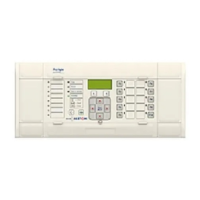pplication Notes
P74x/EN AP/N
1, P742, P743 (AP) 6-
10.2.3 CT Specification according to IEC 185, 44-6 and BS 3938 (British Standard)
1. Class X according to British Standard: Minimum knee point voltage for saturation
V
k
min = 0.5 x secondary I
F
max x (R
CT
+ R
B
)
Note: This specification is valid for external faults.
The recommended specification makes it possible to guarantee a time to saturation
greater than 1.4 ms with a remnant flux of 80 % of maximum flux (class X or TPX).
This provides a sufficient margin of security for CT saturation detection, which
operates in less than 2 ms.
2. Class 5P to IEC 185. Conversion of class X (BS) with the 5P equivalent (IEC)
3. Class TPX and TPY according to IEC 44-6. IEC defines a composite error as a
percentage of a multiple of the rated current (I
N
) on a definite load SVA.
e.g. CT 1000/5 A – 50VA 5P 20 [CT I
np
/ I
n
A – SVA Accuracy P Kscc]
This definition indicates that the composite error must be lower than 5%, for a primary
current of 20I
np
when the external load is equal to 2 ohms (50VA to I
n
). If secondary
resistance, R
CT
, is known it is easy to calculate the magnetising EMF developed with the
fault current (20I
n
). Actually if the error is 5% (= 5A) with this EMF, the point of operation is
beyond the knee point voltage for saturation. By convention one admits that the knee point
voltage, V
k
, is 80% of this value. For a conversion between a class 5P (IEC) and a class X
(BS) CT one uses the relation:
V
k
=0.8 X [(SVA x K
ssc
)/I
n
+ (R
CT
x K
ssc
x I
n
) ]
SVA = (I
n
x V
k
/0.8 K
ssc
) – R
CT
x I
n
2
In particular cases, calculation could reveal values too low to correspond to industrial
standards. In this case the minima will be: SVA min = 10 VA 5P 20 which correspond to a
knee point voltage of approximately V
kmin
= 70 V at 5A or 350V at 1A. Class TPY would
permit lower values of power, (demagnetisation air-gap). Taking into account the weak
requirements of class X or TPX one can keep specifications common.
For accuracy, class X or class 5P current transformers (CTs) are strongly recommended.
The knee point voltage of the CTs should comply with the minimum requirements of the
formulae shown below.
V
k
≥ k (R
CT
+ R
B
)
Where:
V
k
= Required knee point voltage
k = Dimensioning factor
R
CT
= CT secondary resistance
R
L
= Circuit resistance from CT to relay
R
B
= Burden resistance
k is a constant depending on:
If = Maximum value of through fault current for stability (multiple of In)
X/R = Primary system X/R ratio (for the P74x system, X/R up to 80)
The following CT requirement can be developed for the P74x scheme
V
k
> 0.5 x (secondary If max) x (R
CT
+ R
B
)
With R
B
= 2 R
L

